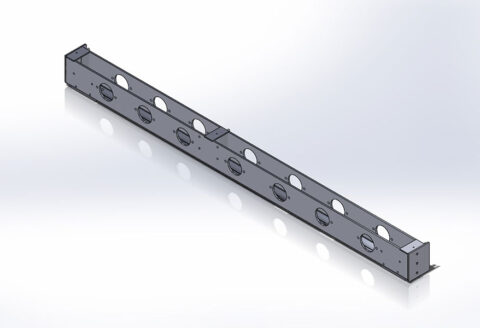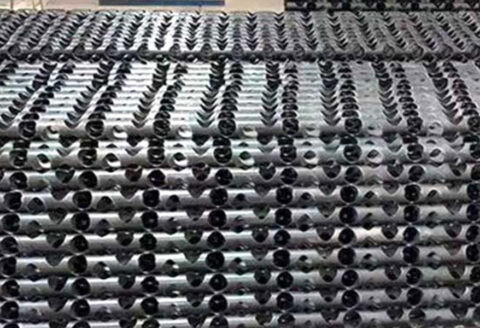There are many factors that affect the quality of laser welding. Some of them are very unstable. How to correctly set and control these parameters in the high-speed continuous laser welding process, and control them in the appropriate range, so as to ensure the welding quality.
Laser cutting manufacturers believe that the reliability and stability of weld formation are important issues related to the practical and industrialization of laser welding technology. The main factors affecting the quality of laser welding are welding equipment, workpiece conditions and process parameters.
1) The beam mode, output power and its stability are important requirements for the laser quality of welding equipment. The beam mode is the main indicator of beam quality. The lower the beam mode order, the better the beam focusing performance. The smaller the spot size, the greater the power density and the greater the weld depth and width under the same laser power. Generally require basic mode (TEM00) or low-level mode, otherwise it is difficult to meet the requirements of high-quality laser welding. At present, domestic lasers are difficult to apply to laser welding in terms of beam quality and power output stability. Judging from the situation abroad, the beam quality and output power stability of the laser are quite high and will not be a problem for laser welding. In the optical system, the focusing lens is an important factor affecting the die casting china quality. The focal length is usually between 127mm (5 inches) and 200mm (7.9 inches). A smaller focal length is conducive to reducing the diameter of the focused beam waist spot, but a too small focal length is likely to cause welding pollution and spatter.
For YAG lasers, the reflectivity of silver is 96%, the reflectivity of aluminum is 92%, the reflectivity of copper is 90%, and the reflectivity of iron is 60%. The higher the temperature, the higher the absorption rate, showing a linear relationship.
2) Workpiece conditions
Laser welding requires the edge of the workpiece to be processed, with high assembly accuracy, and the welding point and the weld seam are strictly aligned, and the original assembly accuracy and welding point centering of the workpiece will not be changed due to welding thermal deformation during the welding process. This is because the laser spot is small and the weld seam is narrow. Generally, no solder is added. If the assembly is not tight and the gap is too large, the beam can pass through the gap and cannot melt the base material, or cause obvious undercuts and depressions. If the deviation from the point to the seam is slightly larger, it may cause incomplete fusion or infiltration. Therefore, the general board butt assembly gap and the point butt joint deviation should not be greater than 0.1 mm, and the misalignment should not be greater than 0.2 mm. In actual production, laser welding technology cannot meet these requirements. In order to obtain a good welding effect, the allowable amount of butt gap and lap gap should be controlled within 10% of the thickness of the sheet.
Successful laser welding requires close contact between the welded substrates. This requires careful tightening of the components to get the effect. This module is particularly difficult to install in the case of thin battery modules, especially in the case of a thin ear.
3) Welding parameters
(1) The influence of laser spot power density on welding method and welding seam forming stability is important in welding parameters. The influence of laser spot power density on the welding method and the stability of weld formation is as follows: stable heat conduction delrin machining, unstable mode welding and stable deep penetration welding. When the beam mode and focal length of the focusing lens are fixed, the power density of the laser spot mainly depends on the laser power and the position of the beam focus. The laser power density is proportional to the laser power. When the beam is focused at a certain position below the surface of the workpiece (1~2mm, according to the thickness and parameters of the plate), the weld can be obtained. When deviating from the focus position, the spot on the surface of the workpiece will become larger and the power density will decrease. If it reaches a certain range, the welding process will change.
The effect of welding speed on welding process form and stabilizer is not as significant as the effect of laser power and focus position on welding process form. Only when the welding speed is too high, a stable deep penetration welding process cannot be maintained due to the small heat input. In actual welding, stable deep penetration welding or stable heat conduction welding should be selected according to the penetration requirements of the welded parts, and unstable mode die casting china should be avoided.
(2) In the range of deep penetration welding, the influence of welding parameters on penetration depth: In the stable range of deep penetration welding, the higher the laser power, the greater the penetration depth, which is about 0.7 power relationship; the higher the welding speed, the melting The shallower the penetration depth. Under a certain laser power and welding speed, when the focus is in position, the penetration depth is large. When the focus deviates from this position, penetration decreases, and even becomes unstable mode welding or stable heat conduction welding.
(3) The main function of the shielding gas is to protect the workpiece from oxidation during the welding process; protect the focusing lens from metal vapor pollution and droplet sputtering; dissipate the plasma generated by high-power laser welding; cool the workpiece and reduce heat Affected area.
The shielding gas is usually argon or helium. If the apparent quality is not high, nitrogen can also be used. Under the same conditions, helium has a smaller tendency to generate plasma than argon, so it can achieve greater penetration. In a certain range, with the increase of the shielding gas flow rate, the plasma suppression trend increases, so the penetration amount increases, but it becomes stable after increasing to a certain range.
(4) Monitoring and analysis of various parameters: Among the four delrin machining parameters, welding speed and shielding gas flow are easy to monitor and maintain stable parameters, while laser power and focus position are parameters that may fluctuate during welding and are difficult to monitor. Although the laser power output by the laser is stable and easy to monitor, the laser power reaching the workpiece will change due to the loss of the light guide and focusing system. This loss is related to the quality, use time and surface contamination of the optical workpiece, and is not easy to monitor, and becomes an uncertain factor that affects the welding quality. The focus position of the electron beam is one of the key factors that affect the monitoring and control of welding parameters. At present, it is necessary to determine the appropriate focus position through manual adjustment and repeated process tests to obtain the ideal penetration. However, during the welding process, due to the deformation of the workpiece, the thermal lens effect or the welding of the multi-dimensional spatial curve, the focal position may change, which may exceed the allowable range.
For the above two situations, on the one hand, high-quality, high-stability optical components should be used, and frequent maintenance should be used to prevent contamination and keep clean; on the other hand, real-time monitoring and control methods of the titanium machining process should be developed to optimize parameters and The monitored laser power and focus position of the workpiece can be changed, closed-loop control can be realized, and the reliability and stability of laser welding quality are improved.
It is worth noting that laser welding is a melting process. This means that both substrates will melt during the laser welding process. This process is very fast, so the overall heat input is low. But because it is a melting process, brittle high-resistance intermetallic compounds may be formed when welding different materials. The combination of aluminum and copper is particularly prone to form intermetallic compounds. These compounds have been shown to have a negative impact on the short-term electrical and long-term mechanical properties of microelectronic device joints. The influence of these intermetallic compounds on the long-term performance of lithium batteries is uncertain.


